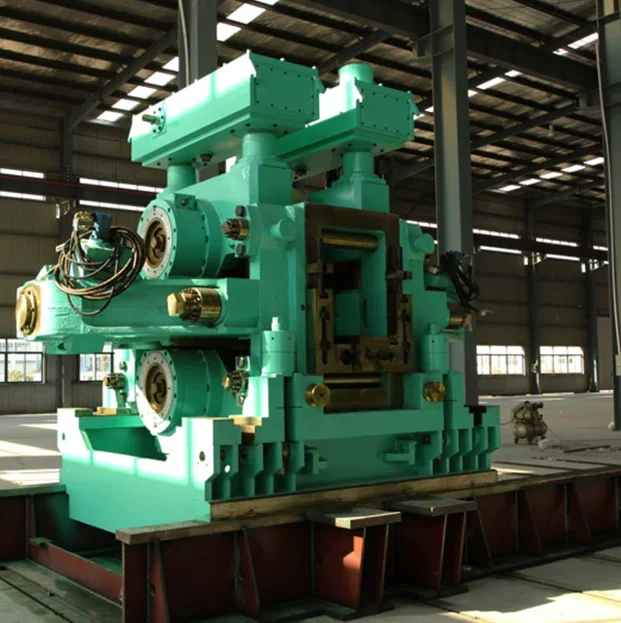Section steel, also known as structural steel, is an essential component in various construction and engineering projects due to its high strength and versatility. The universal rolling mill is a critical piece of machinery used in the production of section steel, capable of rolling a wide range of profiles. The accuracy of the section steel produced is paramount as it directly impacts the structural integrity and performance of the end product. In this blog post, Yushun will delve into the various methods and strategies to enhance the precision and quality of section steel produced by a universal rolling mill.
Understanding the Universal Rolling Mill
Before we explore ways to improve its accuracy, it's crucial to understand the basic workings of a universal rolling mill. This type of mill consists of:
- Rolling Stands: The primary component where the actual rolling process occurs.
- Rolling Rolls: These are the tools that shape the steel.
- Drive Systems: They provide the necessary power to roll the steel.
- Control Systems: These manage the entire rolling process, ensuring precision and consistency.
Factors Affecting the Accuracy of Section Steel
1. Material Quality: The initial quality of the steel stock.
2. Roll Wear: The condition and wear of the rolling rolls.
3. Temperature Control: The temperature of the steel during the rolling process.
4. Rolling Speed: The speed at which the steel is rolled can affect the final shape.
5. Lubrication: Proper lubrication is essential for reducing friction and ensuring a smooth roll.
6. Alignment: The alignment of the rolling stands and rolls.

Strategies to Improve Accuracy
1. Material Quality Control
- Inspection: Regularly inspecting the incoming steel stock for any defects.
- Testing: Conducting mechanical and chemical tests to verify the properties of the steel.
2. Regular Maintenance and Roll Replacement
- Monitoring: Keep a close eye on the performance of the rolls.
- Replacement: Replace rolls before they become too worn to maintain the desired profile accuracy.
3. Advanced Temperature Control Systems
- Uniform Heating: Ensure that the steel is uniformly heated to the optimal rolling temperature.
- Thermoregulation: Use thermocouples and sensors to regulate the temperature during the rolling process.
4. Optimizing Rolling Speed
- Adjustable Speeds: Utilize variable speed drives to adjust the rolling speed according to the steel's properties and the desired profile.
- Control Systems: Implement sophisticated control systems that can fine-tune the rolling speed for each pass.
5. Effective Lubrication Practices
- Lubricant Selection: Choose the right type of lubricant suitable for the steel being rolled.
- Application Methods: Employ modern lubrication techniques such as spray or brush systems for even distribution.
6. Precision Alignment and Calibration
- Laser Alignment: Use laser alignment tools to ensure that the rolls and stands are perfectly aligned.
- Calibration: Periodically calibrate the mill to maintain the precision of the rolls' positioning.
7. Quality Assurance and Inspection
- In-Line Inspection: Implement in-line inspection systems that provide real-time feedback on the product's quality.
- Sampling: Conduct random sampling and testing of the rolled steel to ensure consistency.
8. Feedback Loops and Continuous Improvement
- Feedback Mechanisms: Create feedback loops where operators can report issues and suggest improvements.
- Iterative Process: Use the feedback to make incremental changes and improvements to the rolling process.
Conclusion
Improving the accuracy of steel sections produced in a universal rolling mill is a multifaceted challenge that requires attention to detail and regular maintenance. Bringing better structural integrity and performance in the final application, ensuring the safety and longevity of construction and engineering projects.
https://www.wxisun.com/How-to-improve-the-accuracy-of-section-steel-universal-rolling-mill.html
Yushun
yushuntech@163.com

